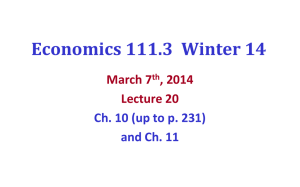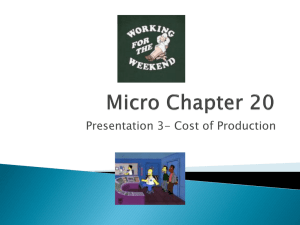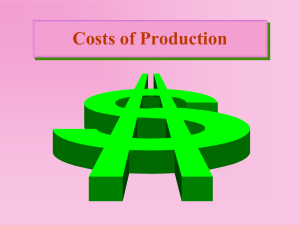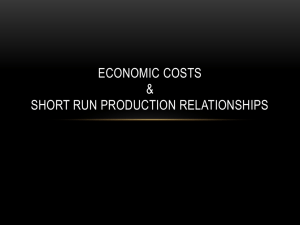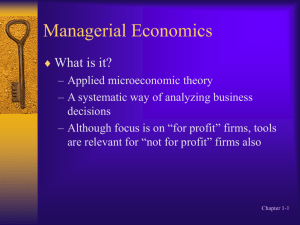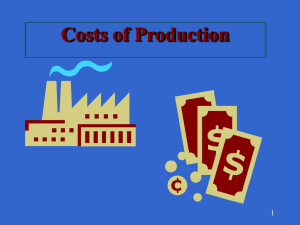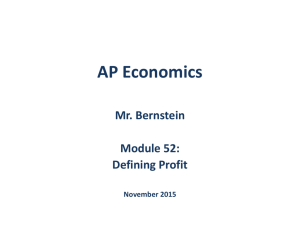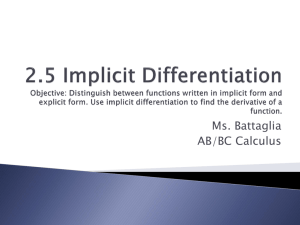Chapter 22 The Costs of Production
advertisement
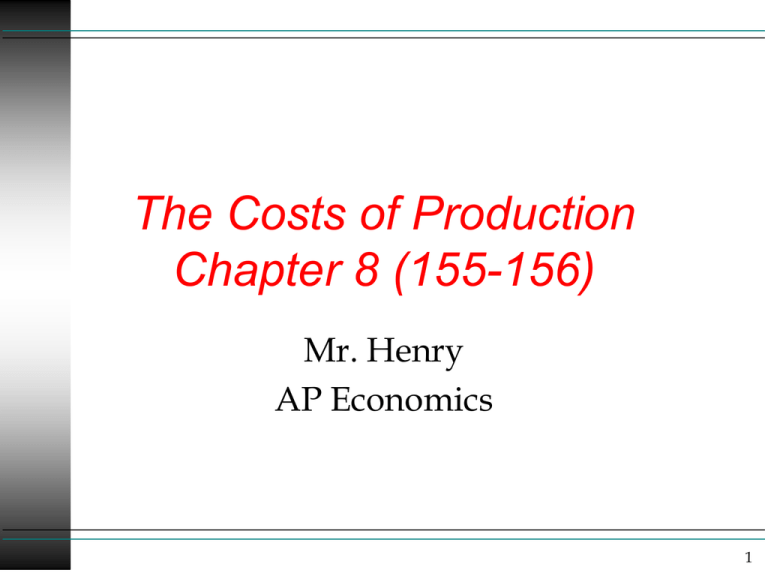
The Costs of Production Chapter 8 (155-156) Mr. Henry AP Economics 1 Behavior of Producers… One of the big questions facing producers is what economic resources to obtain and what to produce with these resources? 2 Economic Cost… When society uses a combination of resources to produce a particular product, it gives up all other alternative uses of that resource. This is known as the economic cost, or opportunity cost. 3 If you were the owner of an industry, what would you use your steel for? 4 Explicit vs. Implicit Costs Explicit Costs are the monetary payments (expenditures) it makes to those who supply labor services, materials, fuel, transportation. Payments for the use of resources owned by others. Implicit costs are the opportunity costs of using its self-owned, self-employed resources. Implicit costs are the money payments that self-employed resources could have earned in their best alternative use. 5 Example: Mr. Henry opens a daycare. Yes, it may seem like I make more money being my own boss & owner, but I have explicit costs & my implicit costs are my foregone costs like rent, wages, etc. 6 Normal Profit The payment made by a firm to obtain and retain entrepreneurial ability; the minimum income entrepreneurial ability must receive to induce it to perform entrepreneurial functions for a firm. Normal profits are considered an implicit cost because they are the minimum payments required to keep the owner’s entrepreneurial abilities self employed. So in my example, maybe my ability is worth $10,000. 7 Economic or pure profits are total revenue less all costs (explicit and implicit including a normal profit). Economic Profit = TR-EC EX. On next page: economic profits are $24,000 (after $63,000EP + $33,000IP are subtracted from $120,000TR). 8 9 Practice… Gomez runs a small pottery firm. He hires one helper at $12,000 per year, pays annual rent of $5,000 for his shop, and spends $20,000 per year on materials. He has $40,000 of his own funds invested in equipment (pottery wheels, kilns, and so forth) that could earn him $4,000 per year if alternatively invested. He has been offered $15,000 per year to work as a potter for a competitor. He estimates his entrepreneurial talents are worth $3,000 per year. Total annual revenue from pottery sales is $72,000. Calculate accounting profits and economic profits for Gomez’s pottery. 10 Practice… Explicit costs: $37,000 (= $12,000 for the helper + $5,000 of rent + $20,000 of materials). Implicit costs: $22,000 (= $4,000 of forgone interest + $15,000 of forgone salary + $3,000 of entreprenuership). Accounting profit = $35,000 (= $72,000 of revenue - $37,000 of explicit costs); Economic profit = $13,000 (= $72,000 $37,000 of explicit costs - $22,000 of implicit costs). 11 Example of production in the Imagine the room you are in is a short run cookie factory The fixed input is the production facility and it includes refrigerators, bowls, mixers, ovens, tables and other stuff. The variable input will be labor. In a short run, the production period is so short that only the variable inputs (usually labor, materials, and other resources) to the plant can be changed 12 What are examples of variables in the short run at your place of employment? 13 Long Run… The long run is the period long enough for it to adjust the quantities of all the resources that it employs, including plant capacity. The long run is a “variable-plant period” meaning that new buildings or new equipment can be added. 14 What are examples of the long run at your place of employment? 15
